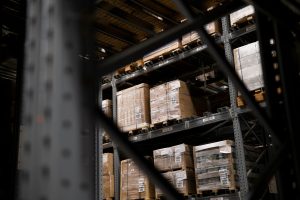Carbon-Neutral Deliveries: How Retailers Are Cutting Emissions
As the world becomes increasingly aware of the detrimental effects of carbon emissions on our planet, retailers have taken notice and are actively seeking ways to reduce their carbon footprint. One major area of focus is carbon-neutral deliveries. By implementing environmentally-friendly practices, retailers can effectively cut down on their emissions and contribute to a more sustainable future. In this article, we’ll explore the concept of carbon-neutral deliveries and how retailers are making significant strides in reducing their impact on the environment.
The Impact of Deliveries on Carbon Emissions
With the rise of e-commerce, the demand for deliveries has significantly increased. While convenient for customers, these deliveries come at a cost to the environment. According to the Environmental Protection Agency, transportation is responsible for 28% of greenhouse gas emissions in the United States alone. This includes emissions from the transportation of goods, which is a significant contributor to the overall carbon footprint of retailers.
In traditional delivery methods, packages are transported using fossil fuel-powered vehicles, resulting in significant carbon emissions. In addition, packaging materials such as plastic and cardboard also contribute to the overall carbon footprint. With the growing concern for the environment, retailers have recognized the need to reduce their impact on the planet and are actively seeking solutions.
What Are Carbon-Neutral Deliveries?
Carbon-neutral deliveries refer to the process of transporting goods in a way that does not contribute to carbon emissions. This is achieved by balancing out the emissions produced by transportation with an equivalent amount of carbon offsets. Carbon offsets are projects or programs that reduce or remove carbon emissions from the atmosphere, such as reforestation or renewable energy initiatives. By purchasing carbon offsets, retailers can effectively negate their carbon emissions from deliveries, making them carbon-neutral.
Implementing Sustainable Delivery Practices
To achieve carbon-neutral deliveries, retailers are implementing various sustainable delivery practices. These include:
1. Alternative Fuel Vehicles
One way retailers are reducing their carbon emissions is by switching to alternative fuel vehicles. These include electric, hybrid, and biodiesel-powered vehicles, which emit significantly fewer emissions compared to traditional fossil fuel-powered vehicles. Companies like Amazon and UPS have already started integrating electric delivery vans into their fleet, significantly reducing their carbon footprint.
2. Efficiency in Routing
Retailers are also becoming more efficient in their delivery routes, cutting down on unnecessary emissions from idling and delivery trucks circling the same area. By optimizing delivery routes, companies can save on fuel and reduce their overall carbon emissions.
3. Sustainable Packaging
Another significant contributor to carbon emissions from deliveries is packaging materials. Retailers are now opting for sustainable packaging options, such as recycled or biodegradable materials, to reduce their environmental impact. Some companies have also started offering incentives to customers who choose sustainable packaging options, such as a discount on their next purchase.
4. Carbon Offsets
As mentioned earlier, purchasing carbon offsets is a common practice among retailers looking to achieve carbon-neutral deliveries. By investing in reputable carbon offset programs, companies can effectively balance out their carbon emissions and become carbon-neutral.
The Importance of Carbon-Neutral Deliveries
Reducing carbon emissions from deliveries not only benefits the environment but also has several business advantages. Here are some of the reasons why carbon-neutral deliveries are crucial for retailers:
1. Meeting Sustainability Goals
With consumers becoming increasingly environmentally-conscious, companies that prioritize sustainability are more likely to attract and retain customers. By implementing carbon-neutral deliveries, retailers can showcase their commitment to reducing their environmental impact and meeting sustainability goals, which can positively impact their brand image.
2. Cost Savings
Switching to alternative fuel vehicles and optimizing delivery routes can result in cost savings for retailers in the long run. By reducing fuel consumption and increasing efficiency, companies can save on fuel costs, which can have a significant impact on their bottom line.
3. Compliance with Regulations
Several countries have implemented regulations to reduce carbon emissions. By achieving carbon-neutral deliveries, retailers can remain compliant with these regulations, avoiding potential penalties and negative publicity.
In Conclusion
It’s clear that carbon-neutral deliveries are crucial for retailers looking to reduce their environmental impact. By implementing sustainable delivery practices, investing in alternative fuel vehicles, and purchasing carbon offsets, companies can effectively achieve carbon-neutral deliveries and contribute to a greener, more sustainable future. As consumers become more environmentally-conscious, retailers must continue to prioritize sustainability and make a positive impact on our planet.











